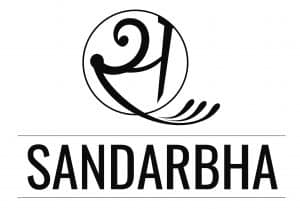Read More: NEFT v/s RTGS: Basic differences between RTGS & NEFT
Sensex also called S&P BSE Sensex or BSE 30, is the market index consisting of 30 well-established and financially sound companies listed on Bombay Stock Exchange (BSE).
• Sensex is regarded as the pulse of the domestic stock markets in India.
• Thirty companies are selected based on the size of the company and its aggregated value. The value of the company is calculated by excluding the shares held by the promoters and owners.
• These are different companies from the different sectors representing a sample of large, liquid and representative companies.
• It is an indicator of market movement.
• If the Sensex goes down, this tells you that the stock price of most of the major stocks on the BSE has gone down. If Sensex goes up, it means that most of the major stocks in NSE went up during the given period.
For example, suppose the Sensex is 30,000 today. If Sensex drops to 28,000 tomorrow, it means that the majority of the 30 companies financial condition is not good i.e. their share price is falling.
Nifty, also called S&P CNX NIFTY or NIFTY 50, is the market index consisting of 50 well-established and financially sound companies listed on National Stock Exchange of India (NSE).
- Nifty is calculated using 50 large stocks which are actively traded on the NSE.
- The 50 companies are selected based on the size of the company and its aggregated value.
- Here, the 50 top stocks are selected from different 24 sectors.
- Nifty is owned and managed by India Index Services and Products (IISL).
Read More: Himalayan Rivers- Ganga River System
• Equity– The shares offered by companies in return for money, are called equities. Equity consists of funds that shareholders invest in a company plus a certain amount of profit earned by them that is retained by the company for further growth and expansion.
•IPO– IPO or Initial Public Offering, is the very first sale of stock issued by a company to the public. Prior to an IPO the company is considered private, with a relatively small number of shareholders. Until a company’s stock is offered for sale to the public, the public is unable to invest in it.
•FPO– A follow-on public offer (FPO) is the additional issuance of shares to investors by a public company that is currently listed on a stock market exchang. FPOs are popular methods for companies to raise additional equity capital in capital markets through an issue of stock.
•Agent– A broker or brokerage firm is said to be an agent when it acts on behalf of the client in buying or purchasing of shares.
•Dividend- A portion of the company’s earnings decided to pay to its shareholders in return for their investments. It is usually declared as a percentage of current share price or some specified INR value, usually decided by the board of directors of the company.
•Face Value-The cash denomination of the individual debt instrument. It is the amount of money that the holder of a debt instrument receives back from the issuer on the debt instrument’s maturity date. Face value is also referred to as par value or principal.
•Hedge- This is used to limit your losses. It’s a strategy or an attempt in reducing the risk of adverse price movements of assets.
•Listed Stock-Shares of an issuer that are traded on a stock exchange. Issuers pay fees to the exchange to be listed and must abide by the rules and regulations set out by the exchange to maintain listing privileges.
•Market Capitalization-The total value in INR of all of a company’s outstanding shares. It is calculated by multiplying all the outstanding shares with the current market price of one share. It determines the company’s size in terms of its wealth.
•Portfolio-Holdings of securities by an individual or institution. A portfolio may include various types of securities representing different companies and industry sectors.
•Risk-The future chance or probability of loss.
•Securities-Transferable certificates of ownership of investment products such as notes, bonds, stocks, futures contracts, and options.
•Yield-It is the measure of return on investments in terms of percentage. Stock yield is calculated by dividing the current price of the share by the annual dividend paid by the company for that share. For example, if the current price of the share is INR 100 and the dividend paid is INR 5 per share annually, then the stock yield is 5%.










